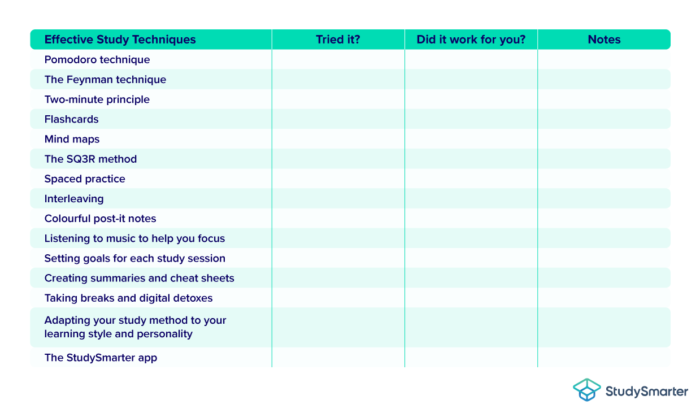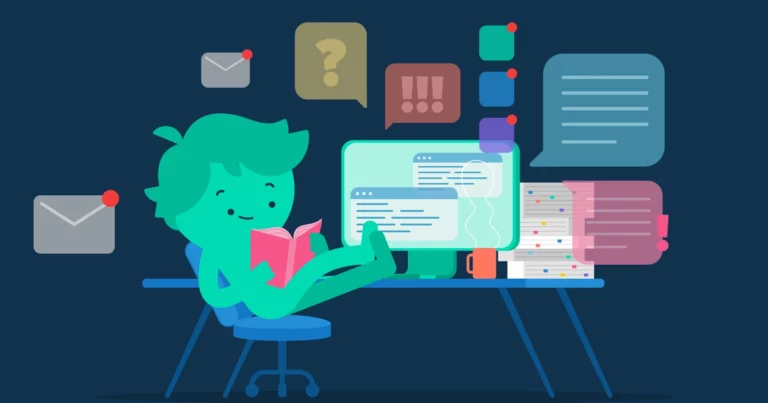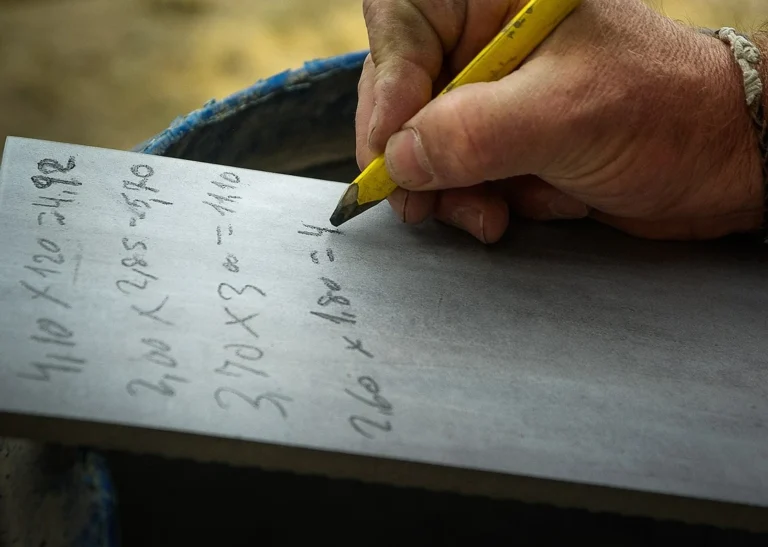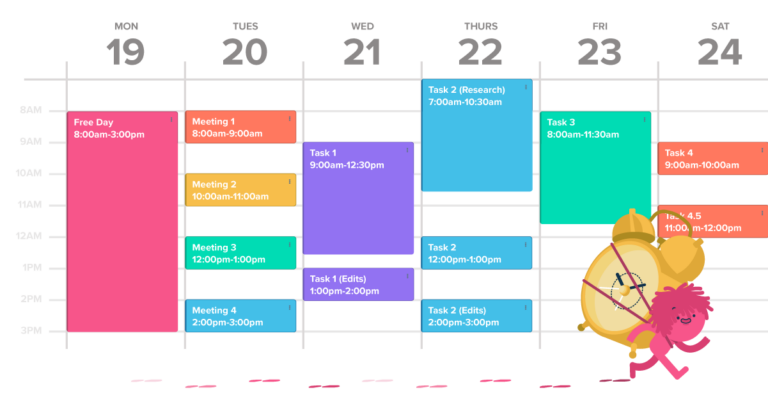Different Study Techniques
OK, so it’s been a while since I was a university student stressing over tests and exams (honestly, WHY AM I AGING SO FAST), but I do vividly remember the sheer panic that set in around exam time. Full disclaimer, I was NOT good at studying effectively, which showed in my last-minute cram sessions, all-nighters, and frantically trying to learn a maths proof while sitting in traffic (no surprises here, but you can’t learn a three-page maths proof by heart 💔).
So, there is no way I’ll dole out any advice to you 😉. Instead, I spoke to some of team members at StudySmarter (both past and present students) about how they approach (or approached) their studies. I got some brilliant insights, so I’m hoping some of these techniques will work for you if you’re looking for some #StudyingInspiration.
Effective Study Techniques for Exams from the StudySmarter Team
No one likes tests and exams (or maybe you’re an anomaly, and you do). Either way, here are some effective techniques to try out for your next study sesh.
Advice from Richie – Stop Procrastinating!
Richie, who is also a college lecturer, strongly advises that you start TODAY – just do something TODAY! After your lectures, write a paragraph summarising what you learnt, for example. Or, if you have an assignment, go home or to the library and just write one paragraph on the day you get the assignment. It doesn’t matter what or how you do it, but do your best to START instead of leaving all your homework and studying to the last minute. Richie also advises doing short, frequent study sessions instead of long ones. And my favourite bit of advice from him?
💡Give your work, studies, assignments, and exams the respect they deserve!
Additionally, here are some books Richie recommends to help you build good habits (which include studying):
- 7 Habits of Highly Effective People by Stephen Covey. This is one of the most popular self-help books of all time and is used by large corporations and universities across the world.
- Atomic Habits by James Clear is a short, step-by-step manual on how to start or stop any habit, from good ones like exercise, reading, and studying to bad ones like smoking or overeating.
Advice from April – Post-It Notes
April is studying physics, so if you’re a student in this field or similar, here’s April’s advice:
‘Sometimes, when I look at a problem, I’ll ask myself, “What is happening here?” I then use post-it notes to write a short note about each concept covered, the formulae associated with it, and a simple sentence on what it is applied to. I am more of a visual person, so this has definitely helped me organise my thoughts!’
Advice from Rebekah – Goals & Flashcards
Rebekah studied politics and French for her undergraduate degree and public affairs for her Master’s. Her technique is to set learning goals and use the tactile process of rewriting notes and making flashcards:
‘Usually, the tactile process of rewriting my notes or making flashcards and then going over them really helps me! Writing it out helps solidify the study material in my mind. I usually go over any PowerPoint or lectures and textbooks or look up other resources as needed. Setting goals for how much I need to study helps keep me on track. When I’m a few weeks out from a big test, I start to look at how much content I need to go over and split it up. For example, if the test covers 15 chapters and I have two weeks, then I try to go over two chapters a day and then save some time at the end to go over areas that I didn’t feel as confident in.’
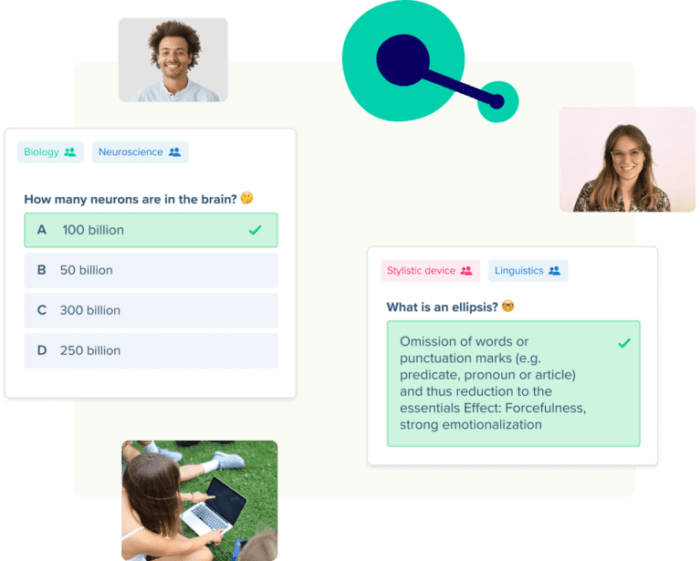
The StudySmarter app offers a powerful flashcard-making tool with spaced repetition to help you achieve your learning goals.
Advice from Ryan – Voice Recordings
As a student, Ryan, would (when he was super busy) either type his notes into a text-to-voice app or take a recording of himself reading his notes. He would then listen to those notes repeatedly while doing chores or driving (which is a fantastic way to do two things at once and capitalise on your time).
Advice from Sebastián – Flashcards & Reactions
Sebastián has a BSc in Astrophysics, an MA in Philosophy of Science, and is currently completing his MSc in Physics (certified genius, I tell you!). Here’s his super valuable advice (especially if you’re studying philosophy or similar):
‘Recently, I gave flashcards another shot, and they really worked for me. It’s important not to clutter a single flashcard with too much information and also to review them often. Reading philosophy, I posed myself reading questions as I read through a paper. I also made sure to write a 1.5 to 2-page reaction immediately after finishing reading the paper. That significantly improved my recall of the content.’
Advice from Taylor – Cheat Sheets and Practice
Taylor studied biomedical engineering. Because many of his courses were based on solving problems, he would do as many practice problems as possible to practise thinking outside the box. For classes that required less problem-solving, Taylor would create a double-sided summary/cheat sheet. This helped him to remember key concepts (as he had to write them down again), and the sheet became a handy reference for study sessions.
And because we at StudySmarter like to emphasise how essential breaks and digital detoxes are for studying, here’s some proof from Taylor:
‘I took short and frequent breaks to keep blood flow going in my legs and my eyes rested from staring at the screen! I also drank lots of water, and I needed lots of sleep, so I tried to get eight hours when things weren’t so hectic. I also turned off Instagram, Snapchat, and group message notifications on my phone so that I wasn’t checking it every time a notification came up. I would also make sure I woke up early and got to my early classes so I got a head start on my work for the day.’
Advice from Mariacristina – Mind Maps
Mariacristina is a huge fan of using mind maps to make your own connections between concepts and subjects. If you’ve never really capitalised on the effectiveness of mind maps before, we’ve got a couple of helpful articles for you to check out: Simple and Creative Ways to Create a Mind Map and The Advantages of Mind Mapping.
And while making your mind maps, why not listen to music to help you concentrate? Oh, and don’t forget that when creating your mind map and taking notes, write things down in your own words, as this will help you memorise the content better.
Advice from Ben – Pomodoro, Sports & Learning Something New
We’ll get to the Pomodoro technique for studying later in this article, but Ben says he likes to do Pomodoro sessions with friends, especially in the Summer (45 minutes of work and then 15 minutes of chatting).
Ben also likes to break up his study sessions by doing hobbies or sports (you see, you can’t escape not taking study breaks to study effectively!).
Here’s what else Ben does (also, I really like his advice about learning other things apart from his studies to motivate him because, let’s face it, life and learning are more than just a grade on a piece of paper!):
‘I don’t make extensive notes and prefer just to read the textbook or given class notes followed by practice questions to consolidate my knowledge. Since I stopped making notes, this has given me a lot more time without a dip in results. I also try to learn/do other things at the same time as studying (things like painting and coding for me), even if it is only a little, as I’m often disappointed after spending a lot of time revising something just to be given a grade on a piece of paper! I like to feel like I’m achieving something (like finishing a painting) or learning something new (e.g. coding).’
Advice from Arjan – Make Equations Logical
Arjan shared a fantastic document he put together on how to study and prepare for your physics exams. We’ll keep his exam prep notes for another article, but here’s a very important study technique you should make good use of when it comes to learning equations:
💡Make sure the equation you have to learn makes sense to you!
In other words, ‘If an equation is logical to you, you should be able to derive it on the spot or at least derive which symbols go where within the template you remembered.’ In even more other words, you shouldn’t just memorise an equation without understanding it.
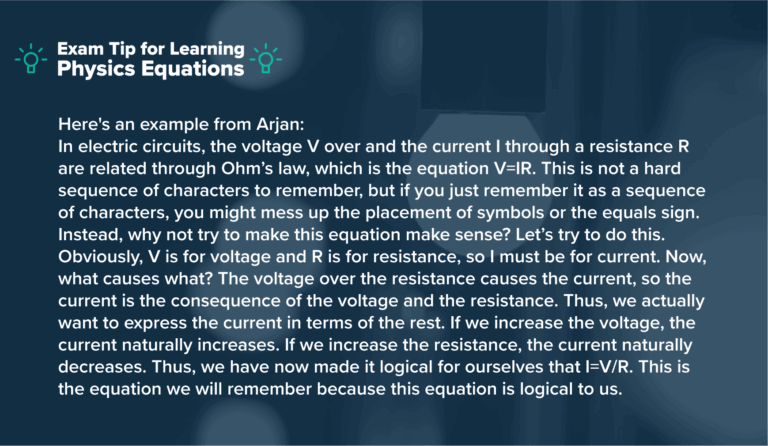
Advice from Isaac – Maths Dictionaries & Learning Rabbit Holes
If you’re a maths or physics student, here’s some brilliant advice.
Now, from my own experience, I know how intimidating it can be studying for maths. I had numerous cry-fests, all-nighters, and then laughing fits after the exam when my friends and I realised how badly we probably did in the test.
But I don’t want this to happen to you! So, as Isaac says, ‘The key to gaining a proper understanding and intuition for mathematics is building up your knowledge by attempting problems. You can think of building a cathedral out of bricks. It takes a long time to build the cathedral out of the large number of bricks that are required, but each brick is absolutely necessary to your overall understanding.’
When studying maths and physics, it’s important that you take the time to understand why the equations are the way they are – i.e. try to understand where the models and equations we use come from and what assumptions these models are based on. For example:
- What are the limitations of certain models and theories?
- When are the models useful?
In other words, try to gain a broader philosophical approach to studying physics!
Oh, and bonus: practising maths is very useful for learning physics! So, when it comes to learning for your math tests and exams, be sure to:
- Practice, practice, and more practice.
- Review errors.
- Master the key concepts.
- Understand your doubts.
- Create a mathematical dictionary (this is a great tip!).
- Apply maths to real-world problems.
As Isaac further suggests, ‘Don’t be afraid to go down learning rabbit holes and discover things outside of your school curriculum. Become somewhat of an expert on something, even if it’s a really small area! This will give you a lot of confidence, and you can show off your fun facts and knowledge to peers!’
Advice from James – At a Crossroads
The thing about effective studying techniques is that what’s effective for you isn’t effective for others – and that’s TOTALLY OK. You have to play around a bit to find what works for you. And that’s exactly what James is currently doing. As he says,
‘I am kind of at a crossroads with study techniques at the moment. The study techniques which have always been pushed as effective and most efficient haven’t been working for me, so I am going through a kind of transition and trying a method that is a lot more adapted to my personality rather than what others say works well.’
When choosing a technique, you need to choose one that aligns with your learning style or, as James says, your personality.
James is workings towards his MSc and says he is trying a new method where he’ primes himself to study by tricking himself into getting very interested in the learning material’. This can tie into the two-minute principle, which is basically designed to stop you from procrastinating. For example, if you have a goal/task (like studying a specific chapter), you just need to focus on the first two minutes of that task. Then once you’ve started and gotten through those first two minutes, you’re likely to find that you’ll want to continue and finish what you’ve started.
Using a study app like StudySmarter that comes with flashcards, study plans, and a study timer can be extremely helpful!
7 (Other) Types of Study Techniques to Try
Aside from what we’ve mentioned above, there really are A LOT of study techniques for you to try. I’m not going to list them all, but here are some of our top picks:
The Pomodoro Study Technique
The Pomodoro technique is all about work-break intervals. With the traditional Pomodoro technique, one work interval is 25 minutes long and is followed by a 5 to 10-minute break. You use these 25 minutes for pure, undistracted work where you stay 100% committed to the task at hand. And once your 25 minutes are up, you take your 5 to 10-minute break. You then repeat this about four times, and after that, you take a much longer break. But how long you want to make your intervals is entirely up to you. If you want to study for 50 minutes and then take a 10-minute break, go for it. It’s all about what works best for you.
We have a whole article dedicated to this beloved time management technique, so we will definitely not repeat ourselves too much here. You can head on over to Optimise Your Study Time With the Pomodoro Technique for in-depth info on this.
Pomodoro Study Technique: Review
Sebastián tells us why he finds the Pomodoro technique helpful when studying:
‘As far as the Pomodoro technique has helped me study, it helped me break up tasks for specific subjects into more manageable chunks. So, if I was taking three to four courses in a semester and had things to hand in for them every week, such as homework, I would break up study sessions into definite chunks for each subject. After the end of each 20 minutes (or whatever unit of time I was using), I would force myself to switch subjects regardless of how far ahead I was on the assignment. This helped me a lot for three reasons:
- It made sure I wasn’t postponing starting work on any subject.
- It prevented me from succumbing to tunnel vision about a given problem or topic.
- It gave my working memory time to process unconsciously whatever I left behind as I was working on another task.
Points 2 and 3 work great in combination. Whenever tunnel vision happened, I would end up wasting a lot of time trying to solve something I was stuck on when, actually, better use of my energy at that moment could have been directed elsewhere. This ties in well with allowing for unconscious processing to happen as you focus on something else. Once you get back to the task that was giving you difficulties, you usually find that it’s easier to accomplish because you’re looking at it with fresh eyes.’
The Feynman Study Technique
So, what is the Feynman technique? Well, there are four main steps to applying the Feynman technique:
- Choose a topic you want to learn (i.e. choose what you want to study for your study session).
- Explain what you’ve learnt out loud to a child (apparently a 12-year-old!). But in all seriousness, you can explain it to anyone of any age or even just yourself using a whiteboard. The point is to explain the info in simplistic terms (i.e. to someone who doesn’t know anything about the topic). If you want a fantastic example of how to turn complex scientific research into an article that a 12-year-old could definitely understand, check out Science Journal for Kids!
- Now you need to reflect, refine, and simplify. When you start explaining, you’ll notice where you have some knowledge gaps/where you’re struggling to explain something. If you are explaining to someone else, encourage them to ask questions. This stage shows you what you need to go back to and learn so that you can teach what you’ve learnt confidently and simplistically.
- Organise and review. Now you can try explaining what you’ve learnt to someone else and assess whether they’re confused by what you’ve explained. Chances are, if they’re confused, you can still simplify your explanation further.
Basically, the Feynman technique is all about UNDERSTANDING what you’ve learnt and not simply learning your work parrot-fashion (i.e. memorise, regurgitate for the test, and forget). I made that mistake too many times with maths and physics in high school – I just memorised equations and examples without understanding how they all worked. And trust me, that parrot-fashion learning will come back to bite you in the ass one day (*my final year 12 maths exam*).
The SQ3R Study Technique
This technique is all about reading comprehension and helps you to point out and memorise the most important information from your learning materials. SQ3R stands for Survey, Question, Read, Recite, and Review:
| Survey | You could also call this part skimming. Before deep reading your work, start by skimming and making notes of important features (headings, tables, charts, images, bolded sections, etc.). |
| Question | This is your time to question your learning materials, such as what do you already know, what do you want to learn from these materials, what are the most important aspects, etc. Asking questions will help you understand the content and focus on what you’re reading better. |
| Read | This part is for your deep reading. Make sure you’re actively looking for the answers to the questions you created. |
| Recite | Once you’ve finished reading, make a summary in your own words, noting down the major points. Also, writing things down in your own words will prevent you from potential plagiarism issues if you’re reading something for your essay. |
| Review | Make sure you fully review what you’ve learnt from your specific learning materials. Can you explain what you learnt to someone else in simple terms? Did you manage to answer your questions? |
This is a great technique to help you fully engage with your learning materials, especially those pesky and overly complicated textbooks!
Study Technique: Flashcards
We’ve also got an article on why flashcards are effective and what flashcards apps you can use. But for a summary, here’s why you should give flashcards a try if you haven’t done so already:
- They promote active learning and active recall. When you create and study your own flashcards, you have to think about the answer and test your memory before you flip them over to get the answer.
- They enhance and deepen memory. The repetition in learning your flashcards strengthens your memory, helping you recall info later on in your tests and exams.
- They help you assess how well you know your material. If you answer your flashcard and then see you’ve got the answer wrong, you can immediately see which areas of the material you need to go back to and focus on.
- You can structure them based on your confidence level. You can create a separate group for these flashcards if you’re confident about specific topics and their answers.
- They condense information and are ideal for on-the-go learning. Flashcards don’t contain much information – just questions or keywords and the answers at the back. This means you can learn from them easily anytime, anywhere.
But as we mentioned above, it’s essential that you don’t over-populate your flashcards with information. You should just use a few keywords, phrases, and/or images.
Download the free StudySmarter app to help you study effectively! You can create or access our teacher-verified study sets, complete with flashcards.
Study Technique: Mind Maps
We mentioned mind maps above (and you should check out our articles on the topic), but just in case you need some more convincing on why mind maps are effective for learning, here are some advantages:
- They promote creative thinking. The visual organisation of knowledge stimulates your creative faculties and helps you generate ideas faster.
- They help you retain information. When you put effort into creating a mind map, you actively engage with your learning materials, which, in turn, helps you remember things better.
- They increase productivity. Organising your thoughts into a colourful, insightful diagram inspires further learning as you can see the product of your efforts.
- They help with time-effective revision. Mind maps will save you a lot of time because they are easily digestible and focused on visible keywords instead of blocks of text.
- They break down complex concepts. Mind maps are an excellent way to analyse more complicated matters because you can split these matters into related chunks and explore the relationship among them using colours, images, and sub-branches of the hierarchy.
And remember, you can be as simple or creative as you like with your mind maps. And if you’re not so keen on using pen and paper, you can try out plenty of apps that come with templates.
Study Technique: Spaced Practice
This is all about not cramming, and it’s a pretty easy method to follow if you plan your time well and create a study plan (pssst, StudySmarter has a free study plan for you, too!).
An example of spaced practice would be learning new material for class on day 1, then reviewing and practising that on days 2 and 3, then after one week and two weeks, etc. I know you have a lot of subjects, but if you dedicate half an hour to studying and revising your material each day, you’ll feel much more prepared and confident about the material as exams approach.
Study Technique: Interleaving
Interleaving practice is designed to get you to approach similar/related problems that are not exactly the same. This is great for subjects with a lot of problem-solving and equations. For example, if you’re learning to solve quadratic equations, don’t just practise the same examples repeatedly. Mix up the types of calculations to change what you’re learning, allowing you to make connections between different but related topics. In simpler terms, if you were learning to play tennis, you would learn by alternating practising forehands, backhands, and volleys, not just forehands (blocked learning).
Interleaving is a response to blocked practice (i.e. learning the same thing over and over again) and is great for preventing rote learning. You can read more about the science behind it here.
The Best Study Techniques: Is There One?
So, while some study techniques have the science to back them up, there isn’t really the best study technique because it’s entirely subjective and dependent on YOU. What works for you won’t necessarily work for others and vice versa. I encourage you to try different methods and see what works best – you can always use a combination of techniques.
I sincerely hope that the above info from students just like you will be helpful for your learning journey. And remember, it’s never too late to start studying more effectively!
List of Study Techniques
We’ve created this table to help you find the most effective study technique/method. You can try the different ones and see what works best for you! All the best – we know you can do it! 🧑🎓
